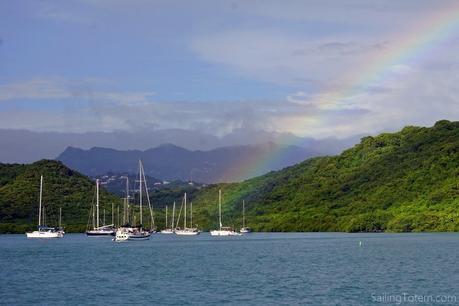
I watched from Totem’s cockpit yesterday as friends sailed out of the La Cruz anchorage. Their next stop: the Marquesas, French Polynesia’s nearest island group to the Americas, around 3,000 miles away. This week’s weather window spawned the first wave of South Pacific-bound departures from our corner of Mexico. When a big passage looms, evaluating options stalls many crews: this one is closing, and the next wave now plays the waiting game. Jamie wrote these observations while we were on weather watch for a significant passage of our own some years ago.
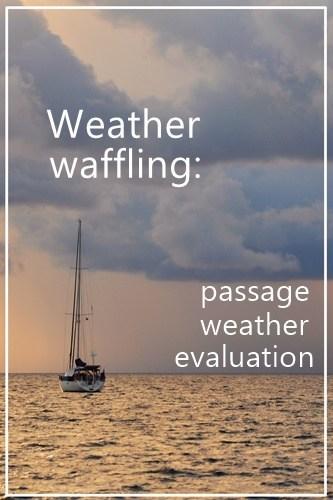
At moments of indecision about uncertain weather forecasts, two phrases get hurled about like cannon shot: weather waffling and analysis paralysis. The meanings of both reside in the shallows between a retreat to the calm anchorage and the bold move to weigh anchor – big seas be damned. Both phrases carry an intrinsic sense of stubborn cowardice as reflected in perhaps the most famous weather waffle in history.
When Captain William Bligh announced his plan to sail Bounty around Cape Horn to reach Tahiti, his otherwise joyous crew became anxious. Upon reaching “the horn” and subsequent month of snow and storm conditions trying to round it, Bligh waffled. After investing so much in one route he ordered the Bounty to turn eastward to begin a journey 4/5ths of the way around the world to anchor at Point Venus in Tahiti. As we know from history, things did not go well for the Captain.
Due to several variables that didn’t exist during Bligh’s time, contemporary use of weather waffle has more to do with pre-departure indecision. With technology and centuries of accumulated knowledge, we easily and accurately know what was previously unknowable. With GPS, a cruising guide, and a VHF radio I know our exact position, how to safely get into a new anchorage, and when the supply ship will be in with fresh produce. Weather forecasting is an amazing discipline of science that accounts for most of the variables most of the time. Unlike a GPS giving latitude and longitude, weather forecasters with the aid of satellites and supercomputers can and do get it wrong. Who hasn’t been out on the boat listening to a NOAA forecast broadcasting sun with light and variable winds, when in reality it’s so windy you’re just trying to keep your ears affixed to your head?

When one experiences an incongruity between forecast and reality, the tendency is to check several sources of weather forecasting. This gets to the heart of the weather waffle. When the sources agree, you can confidently announce to the crew what to expect. When the sources disagree, the next logical step is to seek out more information. Invariably this leads to more confusion and with time a demoralized, and dare I say mutinous, crew. Well, are we going or not?
The frustration of not knowing which path to choose can unhinge novice and salty sailors alike. Our buddy boat apologized in advance of our session of waffling in New Caledonia, saying “I know this week is going to make me grouchy.” The reality is that the accumulated stress of passage prep capped by weather uncertainty can make many people become grouchy. In our particular situation, overlaying the already unsettled weather is the beginning of cyclone season.
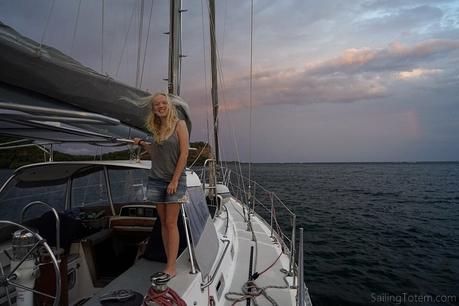
Sunset squalls: Grenada, 2017
At this tenuous stage, that is, having downloaded countless GRIB files and text forecasts and reading a weather router’s opinion, two trends emerge. The first is that you want to do something- anything- to avoid further waffling. Often, emotions push the “let’s just go” approach. The supporting logic being we’ve been in worse weather before, and besides, maybe it won’t be as bad as the so called expert weather router says. That is true, but maybe it will be that bad. The second trend is “group think.” This occurs as the crews of various boats with similar routes get together to discuss weather. Everyone present has the same unspoken hope: that someone with unquestionable authority will walk among them and say, “the time has come to go sailing, and we will be safe.” Unfortunately this usually doesn’t happen.
Then, just as despair is creeping up over the swim step, a glimmer of hope comes as the various weather sources begin to agree on wind speed and direction and sea state that fits within your comfort level. A genuine weather window is finally here.
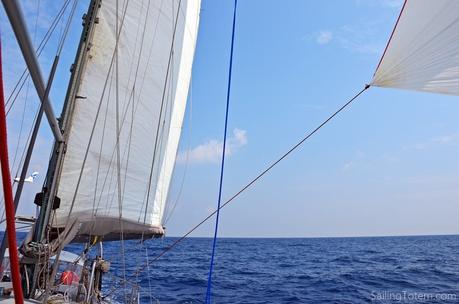
Somewhere between Sri Lanka and Maldives, 2015
Lessons Learned
Although weather waffling carries a negative connotation, it is clearly born out of good intentions for the health and welfare of the crew. Every crew has different abilities and comfort levels. Every boat differs in capability and handling. Every trip brings different demands on both crew and boat. Mismatching what the crew or boat can safely handle with adverse weather is simply poor seamanship. Choosing poorly is the cause of many unfulfilled cruising dreams. When a crewmember experiences discomfort or fear, they naturally don’t want to be in that situation again. When faced with uncertain weather, the captain and crew must make decisions that suit their own needs. If the people anchored next to you choose to “go anyway,” you don’t have follow them out. Weigh anchor only if it is right for you.
We choose to cruise knowing some of the days in paradise may resemble hell. Playing follow the leader can be just as misguided as choosing to never leave the dock because it may be too windy. After nearly two weeks of waiting, we finally had weather conditions that make sense for our departure. Some would say we waffled for nearly two weeks. The uncertainty of when to go was frustrating, but we spent hours of cowardly time swimming with sea turtle, giant trevally, and sharks.
The passage to Australia was mostly uneventful. Here in Banderas Bay, we’ll wait and watch and live vicariously as the next wave of boats waits for their weather window. Mike Danielson (PV Sailing) shares his extensive weather knowledge to help the fleet with departure decisions, Jamie’s been helping coach cruisers on how to use PredictWind and become better at interpreting forecasts for themselves — like the PPJ event pictured below. It’s a great place to base while getting ready to take off! We hope to be lining ourselves up for another run at the South Pacific from here at this time next year.
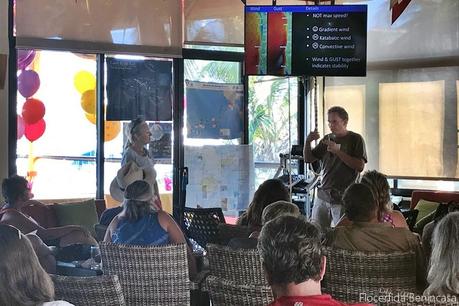
Weather prep: Jamie talks the fleet through GRIB interpretation with PredictWind last week. Thanks Flo for the pic!
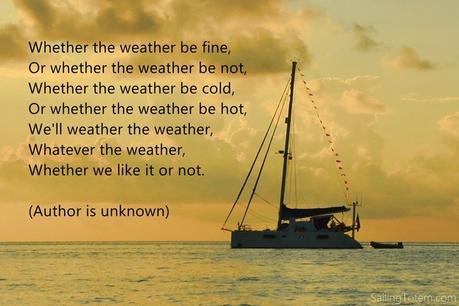
Morning Glory at anchor, Maldives, 2015

